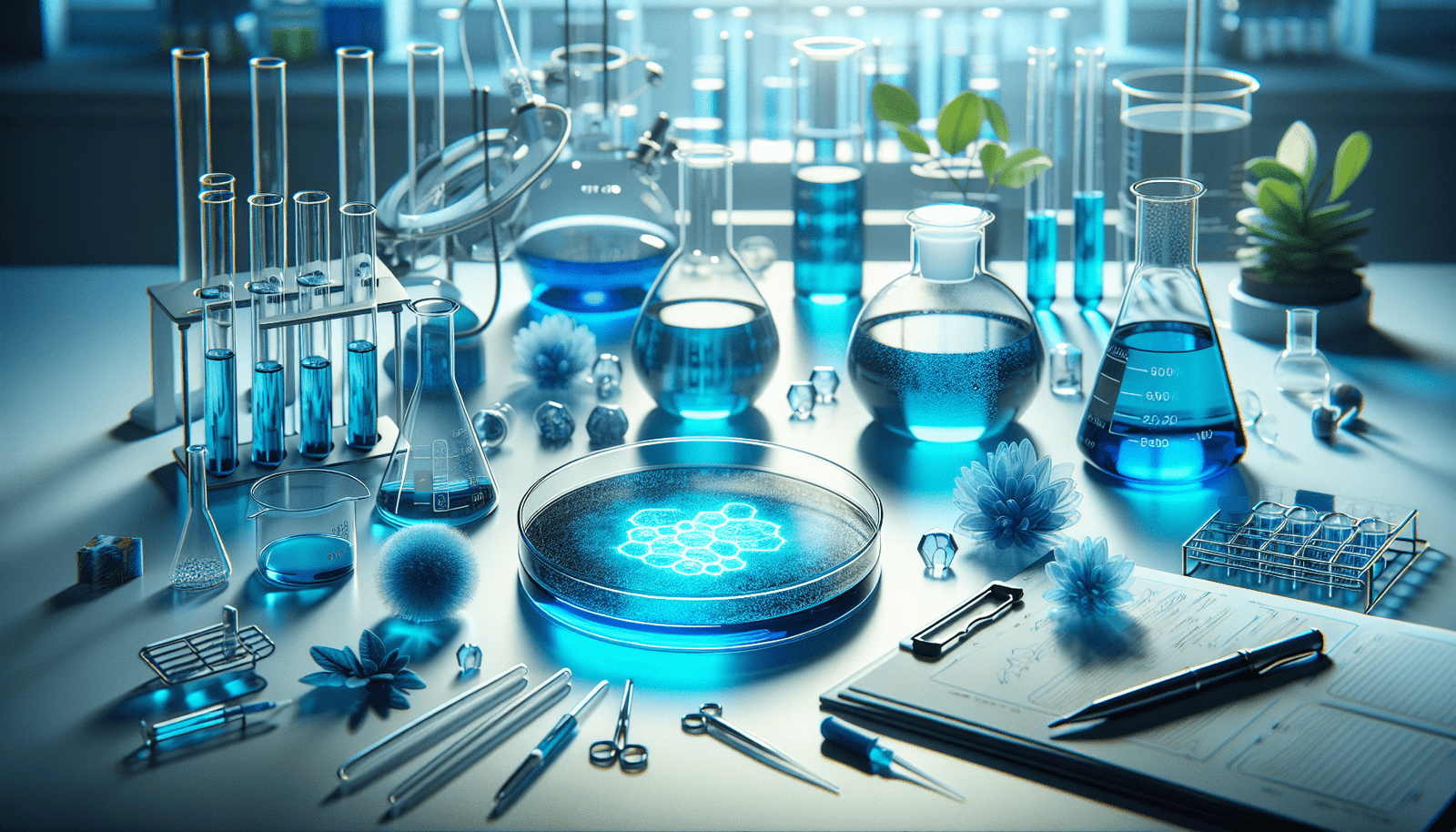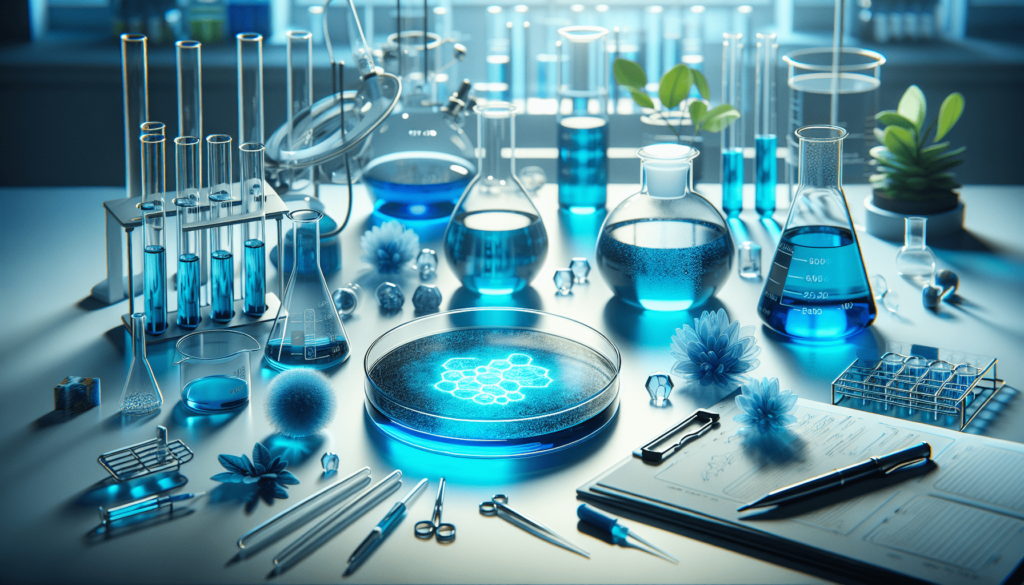
What if I told you that the answer to the question—what reacts with methylene blue?—is a lot more complex and intriguing than you might think? This compound isn’t just some chemical you’ve encountered in a class or read about; it’s a fascinating substance that has a range of interactions that can affect various fields including biology, chemistry, and medicine. So, let’s unravel this mystery together.

Understanding Methylene Blue
Before we get into what exactly reacts with methylene blue, it’s essential to understand what this compound is all about.
Methylene blue, known by its chemical formula C16H18ClN3S, is a synthetic dye that has been around for quite a while, first developed in 1876. Beyond its vibrant blue color, this compound serves multiple purposes, from being used in medical applications to its role as a vital indicator in various chemical tests.
Physical and Chemical Properties
You might wonder, what makes methylene blue so unique? Its physical and chemical properties play a crucial role in determining its reactivity.
Here’s a quick snapshot:
| Property | Value |
|---|---|
| Color | Blue |
| Solubility | Soluble in water |
| pH | Approximately 6.5-7 |
| Molecular Weight | 319.85 g/mol |
| Chemical Structure | Contains a thiazine ring |
Understanding these properties helps to paint a clear picture of how and with what methylene blue might react.
Common Uses of Methylene Blue
You might be curious about where you encounter this dye in real life. Methylene blue isn’t just found in labs or the minds of chemists; it has practical uses that touch various aspects of life.
- Medical Applications: Often used to treat conditions like methemoglobinemia, where it helps restore the blood’s ability to carry oxygen.
- Biological Staining: In laboratories, it’s used to stain cells, making it easier to see specific structures under a microscope.
- Aquaculture: It serves as an antidote for certain fish diseases, highlighting its importance in marine biology.
Understanding these uses sets the stage for exploring what actually reacts with methylene blue.
What Reacts with Methylene Blue?
Now we’re getting into the core of the inquiry: what compounds, substances, or even conditions can cause a reaction with methylene blue? The answers may surprise you.
Reducing Agents
One of the primary classes of compounds that react with methylene blue consists of reducing agents. These are substances that can donate electrons to another substance, effectively reducing it.
Examples of Reducing Agents:
- Ascorbic Acid (Vitamin C): Often used as a food preservative and antioxidant, it can reduce methylene blue, changing it from its blue state to a colorless one.
- Sodium Thiosulfate: Commonly used in photography and also for dechlorinating water, it readily reacts with methylene blue and reduces it.
- Dithiothreitol (DTT): This compound is often used in biological experiments to break disulfide bonds in proteins, substantially affecting methylene blue’s blue hue.
In these examples, the reduction typically results in a loss of color. So, if you ever see your solution turning from blue to colorless, you can bet a reducing agent is at play.
Oxidizing Agents
Conversely, oxidizing agents can also react, although it’s often in a slightly different way than reducing agents.
Key Oxidizing Agents:
- Hydrogen Peroxide (H2O2): This common household product can oxidize methylene blue, reverting it back to its blue form if it has been reduced.
- Potassium Permanganate (KMnO4): Known for its strong oxidizing properties, it can react with methylene blue under acidic conditions, often leading to a vibrant color change.
Interplay between oxidizing and reducing agents showcases the dynamic nature of chemical reactions involving methylene blue.
pH Changes
Did you know that even changes in pH can affect methylene blue’s reactivity? The chemical environment can significantly alter its properties and interactions.
-
Acidic Conditions: In acidic environments, methylene blue remains relatively stable. However, the introduction of reducing agents can still cause it to lose color.
-
Basic Conditions: When you introduce a more basic pH, you might notice that the dye behaves differently. For instance, in higher pH environments, you could see different shades of blue, making it an intriguing observation regarding its reactivity based on environmental factors.
The interplay of pH can be vital in various applications, from biological systems to aquaculture, emphasizing how environmental factors adjust the dye’s overall behavior.
Biological Interactions
If you’re delving into biological interactions, methylene blue does not shy away from that realm either.
Reactions in Living Organisms:
- Cellular Respiration: Methylene blue interacts with cellular components, especially in the context of electron transport chains in cells. It can serve as an electron acceptor, playing a role in experimental biological reactions.
- Antimicrobial Properties: Studies have shown that methylene blue has antimicrobial properties, interacting with bacterial cells in a way that disrupts their function, often used for treating infections.
These biological aspects of methylene blue can lead to different outcomes depending on the specific conditions—what a fascinating component of chemical biology!
Environmental Context
Looking at methylene blue’s interactions in an environmental context can yield different insights as well.
- Water Contamination: If you consider pollutants in water systems, methylene blue can interact with various contaminants, which could help trace or treat polluted sites.
- Aquatic Life: It reacts with various organic materials in aquatic systems, potentially even affecting how fish and other aquatic organisms are treated for diseases.
These environmental elements underline the importance of understanding not just what reacts with methylene blue, but also how it channels its reactions to serve various purposes.
Experimental Uses of Methylene Blue
Feeling curious about how methylene blue is used in real-world experiments? Scientific exploration harnesses this compound in more ways than you may think.
Chemical Indicator
Methylene blue serves as a notable chemical indicator, particularly in redox reactions. Its ability to change color based on its oxidation state makes it extremely useful for experiments.
How It Works:
- In an oxidized state, it appears blue.
- When reduced, it becomes colorless.
This property allows scientists and educators to visualize reactions in a classroom setting, simplifying complex concepts into digestible experiments.
Detection of Bacterial Contamination
Methylene blue is commonly used to assess the cleanliness of environments, particularly in food and water testing.
This process typically involves:
- Adding methylene blue to the sample.
- Observing a change in color, which indicates the presence of bacteria.
Such applications extend beyond just academic settings, reaching into everyday concerns about food safety and clean water.
Safety and Handling
As you explore methylene blue, you’ll likely recognize the importance of safety when dealing with any chemical compound. Understanding toxicity and proper handling procedures is essential.
Precautions to Take:
- Protective Gear: Always wear gloves and goggles to prevent skin irritation and protect your eyes from splashes.
- Ventilation: Ensure that your workspace is well-ventilated. Inhaling chemicals can be hazardous.
Acknowledging these safety measures is crucial for conducting any type of experiment or application involving this dye.

Future Directions
As we look ahead, the future applications and reactions involving methylene blue could evolve under the influences of ongoing research and innovation.
Advanced Medical Uses
Research continues to explore the use of methylene blue in various advanced applications, like:
- Neuroprotection: Potentially beneficial in treating neurodegenerative disorders.
- Diagnostic Imaging: Interested in utilizing methylene blue for more refined imaging techniques.
These advancements could redefine the role methylene blue plays in medicine, showcasing its versatility and potential.
Sustainable Practices
Methylene blue research could also lead the way into more sustainable practices in industries where synthetic dyes are commonly used. Investigations into its breakdown products and recycling of the compound could illustrate pathways to reducing environmental impact.
Conclusion
As you can see, the question of what reacts with methylene blue is layered and intricate, with answers spanning various fields from biology to medicine to environmental science.
Methylene blue is not just a simple dye; it’s a multi-faceted compound that exhibits fascinating behaviors when interacting with different substances, agents, and conditions. Whether you’re looking at it through a scientific, medical, or even environmental lens, it’s clear that its utility and reactivity provide a spectrum of opportunities for exploration.
So, the next time you see that vibrant blue, think about the myriad of reactions it can undergo and the various implications it holds in our world. The story of methylene blue is far from simple; it’s a conversation that invites ongoing inquiry and experimentation.